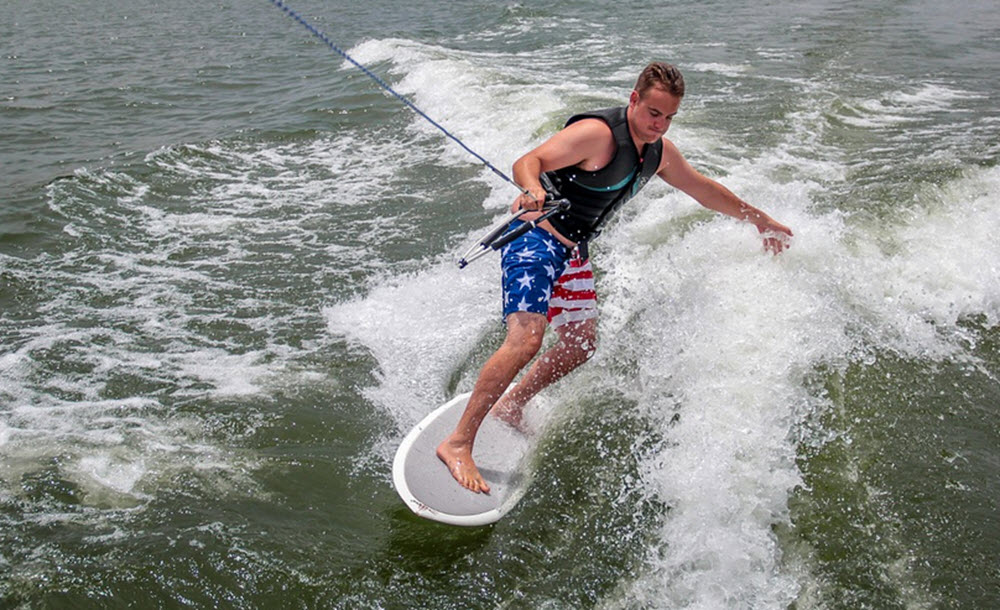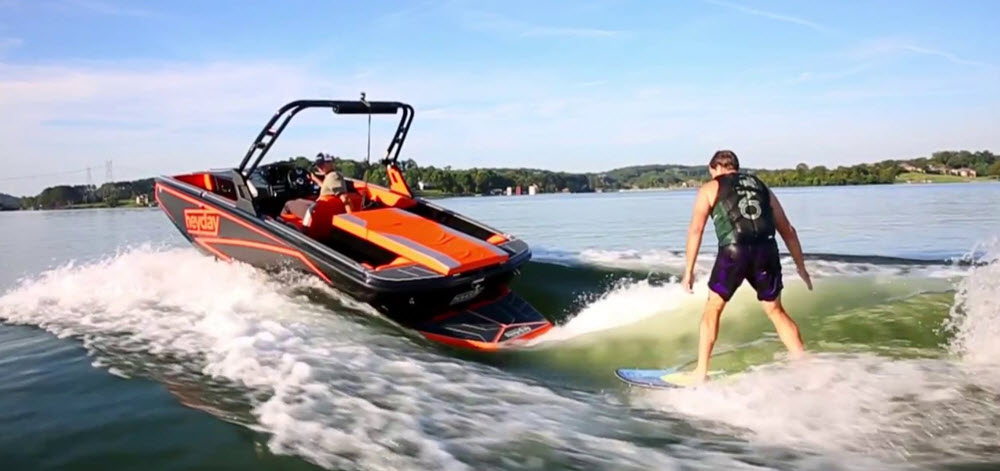Wakesurfing is a sport where the rider rides a boat’s wake, without being directly pulled by the boat. A tow rope is typically used initially, but once the rider has gotten up on the wake, they will drop the rope and ride the steep face below the wave’s peak. In this regard, wakesurfing is similar to traditional (wave) surfing.

Wavesurfers do not use standard surfboards; there are special boards available for wakesurfing.
The boat
- Using a boat where the propeller is under the boat instead of behind it is safer, as it decreases the risk of the surfer getting into contact with the propeller.
- Ballast can be used to weigh the boat down in order to create an extra large wake. (A boat that is deeper in the water creates a bigger wake.) Where the ballast is placed is important; a majority of the weight should be near the back, on the side where the surfer is.
Performing tricks
Many wakesurfers perform various tricks during their ride, including a vast array inspired by other sports – such as skating, snowboarding and (wave) surfing.
Here are a few examples of popular tricks:
| Name | What is it? |
| Air | When the surfer launches off he lip with board into the air, and then lands back on the wake (either toe-side or heel-side).
|
| Cut back | When the surfer bashes off the lip of the wake with the board. |
| Fire hydrant | When the surfer places one hand on the board and takes her front foot off the board. |
| Floating | The the surfer and the board floats on top of the wake. |
| Hang 5 | When the surfer extends the toe-part of one foot over the front of the board. (Hang 5 = five toes extended.) |
| Hang 10 | When the surfer extends the toe-part of both feet over the front of the board. (Hang 10 = ten toes extended.) |
| Lip slide | Similar to floating, but the board is sideways. |
| Paddle back in | When the surfer goes to the extreme rear of the wake, throws down on the board, and paddles back into the power zone.
Alternatively, the surfer pulls the outside rail of the board to bring it back into the power zone after being at the extreme rear of the wake. |
| Pumping | Turning up and down the face of the wake. This can be used to increase the speed. |
| Rail grab | When the surfer grabs the board’s rail white the board is on the wake. A rail grab can be done with one or both hands. |
| Rail grab in the air, also known as Grab air |
|
| Spin | There are many types of spins, such as:
|
| Tubing it | When the surfer throws down on the board and slides back into the tube until covered up (preferably quite deep), before popping out and standing up on the board again. |
| Spray | When the surfer is gouging into the face of the wake, to make the water underneath “explode” and cause a spray. |
| Stalling | Applying pressure to the back foot. This can be used to decrease speed. |

